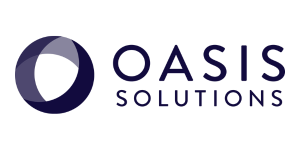This is the final entry in our CRM Terms to Know series. We hope these posts have helped you navigate the Customer Relationship Management software world. Do you know what SaaS means? Or XML? WAP? You'll find those terms here, along with many others!
You can view Part 1 Terms A-E here and Part 2 Terms F-N here
O:
On Demand: A service or feature which is available for immediate use. In most cases the consumer of the service avoids a significant up-front financial investment and instead participates in a "pay as you go" plan - a model which makes on-demand services frequently more affordable for users. On-demand software is typically delivered by an application service provider. This type of service offering is also frequently referred to as Software as a Service.
P:
Plug-in: A program that uses a web browser's application programming interface. Each plugin is browser- and platform-specific and plug-ins are stored locally, on the same machine as the browser. Common examples of plug-ins are those that allow the display or playback of special file types such as animation, audio or video directly in the browser window.
Product Configuration Software: Software that allows customers to customize a product or service to suit their own particular requirements.
R:
Real Time: ‘Instant’ computing in which a system accepts updates whilst carrying out transactions and queries. In order for a link to another system to be real-time, both systems must be available simultaneously.
Response Time: The time taken by the software to execute a command issued by the user. This is critical when customers are visiting websites, configuring products or services and accessing internal systems. It should be less than five seconds and preferably under one second.
Routing Software: Software that directs customers to agents with the relevant skills and information needed to assist them. The customer profile database is queried, in real time, for data and instructions. The routing script uses this information to instruct the call centre telephone system how to route the customer.
Really Simple Syndication (RSS): A means of distributing dynamic content to subscribers of that content.
S:
Sales Force Automation: Software that supports the sales force by automating much of the routine work throughout the sales process; including targeting, lead qualification, meeting scheduling, diary management, contact reports, reporting, follow-up, to do lists and forecasting among other tasks. This enables members of the sales force to concentrate on managing and developing the customer account by widening and deepening the relationship,
introducing them to new products, designing new customer-centric processes, setting up collaboration, joint product development, etc.
Scalability: The ability to increase database size or the number of users without losing performance.
Service Oriented Architecture: An application architecture that provides patterns for design, development, deployment and management of a business application infrastructure.
Software as a Service (SaaS): A software application delivery model where the vendor both develops and operates the application for use by its customers over the internet. Customers do not pay for owning the software itself, rather they pay for using it.
Switching Costs: The hidden costs incurred when switching from one product to another in the marketplace.
T:
Touch Points: Customer-facing parts of the organisation, including relationship managers, sales force, branches, call centres, interactive voice response systems, websites, interactive television, automated teller machines, electronic mail, letters and fax.
U:
User Interface: The intersection of the technical aspect of a system and its users. A business' homepage is an example of a user interface, as is any other webpage hosted by the business
W:
Web Extensions: Java or ActiveX applets that extend the functionality of internal business systems and enable managers, employees, suppliers or partners to access the systems directly.
Web Self-Service: Electronic support which allows customers and employees to access information and perform routine tasks over the internet, without requiring any interaction with a representative of an enterprise.
Web Server: The server refers to the host of the information on the web. Software that runs on the server side is used to manage the information on the server.
Web Services: A software component which can be accessed by another application through the use of generally available, ubiquitous protocols and transports.
Wide Area Network (WAN): Connects remote computers or networks together, by means of public or private data communications networks or the internet.
Wireless application protocol (WAP): A protocol for converting web pages into text for display on small screens such as telephones.
X:
Extensible Mark-Up Language (XML): A language for the creation of information formats
and data on the World Wide Web and intranets.
Oasis Solutions Group provides a wide range of CRM solutions, training, support and services. Do you have questions about CRM software or need help with your current Customer Relationship Management system? Contact us for help!
Did we leave any "Need to Know" terms off the list? Let us know!


